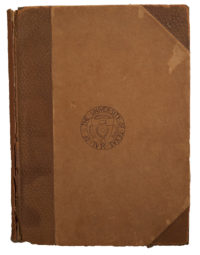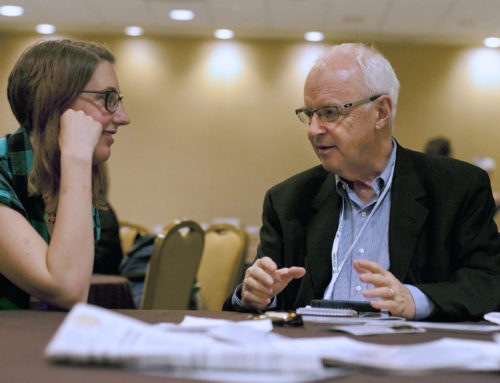And we should all be fighting for their survival.

1911 University of Texas Cactus yearbook cover
I have to admit right up front — I’m biased. I’m sitting here on a beautiful spring day worrying about yearbooks. Well, not about their survival, about their future. And they have a future — at least we all better hope so.
Earlier this week, I got an invitation to the 100th reunion of a group I belong to at The University of Texas. Some odd years ago, I happened to find a copy of the 1911 Cactus yearbook from UT at a library sale. I purchased it for like $10 as I recall. Today, I shot some photos of that yearbook before I shipped it off to be used at the reunion. In flipping through the pages, I’m reminded of the value of the printed yearbook.
Flip inside the disintegrating cover, and you can gain insight into the now famous football team or baseball team. You can read poetry by the senior class. You can see what activities the students were involved in. You can read ads from local businesses including the college bookstore that still exists, more or less, today. And of course you can see the first entry of the Friar Society.
As a historical record, this book succeeded.
Yearbooks serve a plethora of functions. Providing a near permanent and accessible record of life at the school is but one of those purposes, but it’s the one no other media can match, no how, no way.
As pervasive as Facebook, Flickr, SmugMug and Twitter are in today’s society, they’ve been around for less than one-tenth of the life of that yearbook. Who knows how accessible they’ll be when the Friar Society celebrates its 200th anniversary. Who knows if we’ll even be able to view those JPEG files that we shoot with our cell phones and digital cameras and upload at 30,000 feet while fighting the cramped spaces flying between cities.
Recognition
I also have to admit that I’m a little biased in another way. I just received a Twitter post from one of my buddies at the University of Miami. Our university yearbook received a Gold Crown, the highest national award given by the Columbia Scholastic Press Association. I’m sure it’s only one of five or six that received that honor, but I haven’t seen the official list yet.
I’m proud of the hard work the students put into producing that yearbook. Led by fantastic people like Michele Chandler and Bryant Robbins, the book was bound to be successful. They knew what a yearbook was all about.
Sure, they knew it was a historical record. Indeed in 100 years, no matter what the technology is like and no matter how much digitizing the library does of the pages, when people want to know what student life was really like — from the students’ point of view — they’ll turn to the printed book. Administrators will ensure that history is accessible from their point of view. But want to know what the students thought about and did, turn to the yearbook.

Friar Society page from the 1911 University of Texas Cactus yearbook.
Our student leaders also knew that the yearbook played an important role on campus in addition to being a historical record. For them, it’s an educational opportunity, an opportunity to learn how to be leaders, how to be editors, how to manage time, how to participate on a team. These are all as valuable as any lesson they will learn on the other side of campus in the classroom.
They also knew that the book serves as a reference tool, documenting scores, participants in group activities, major events (such as the resignation of the chancellor, provost, chair of the Board of Trustees, University attorney and athletic director). In 100 years, when people want to know what happened all in one place, they can go right to the yearbook and read the student perspective.
They also knew it was a business. With a budget just shy of $100,000, it was a business few other college students could say they manage. Largely devoted to payroll and printing, they learned lessons similar to those in Congress are learning now about how to manage scarce resources. They learned how to fight for their fee dollars and how to work with the business staff to increase advertising revenue. They worked with their own marketing folks to increase awareness of the book and sales. Not even a degree in management could provide hands-on knowledge like that.
Writing a chapter
I’m also biased in another way. I’m working on a book chapter about yearbook design, sort of a yearbook design 101. I’ve spent hours and hours on it already. I’d be crazy to spend that kind of time if I thought yearbooks were going away. Hogwash.
And as I look ahead to the rest of the semester and the upcoming years, I know other people better be fighting for the yearbook’s survival just as hard as I do.
All those people who want photos of campus activities, such as various campus departments, the Alumni Association and even the University’s website should realize that without the yearbook our photographers would have no incentive to go shoot things unless they got an assignment from the newspaper. It’s for the yearbook that they document history, not just events for tomorrow’s paper.
All those professional media outlets who show yearbook photos of famous people, and even not-so-famous people, when they decide to run for public office or commit some crime, well, what would they do without the yearbook?
Don’t be shortsighted
I’ll admit another, final bias. I’m amazed at how shortsighted people can be. As I flipped through those pages of the 1911 Cactus, I got a feel for what life was like in Austin 100 years ago. I would trade that impression for a terabyte of photos, an online slideshow or a video. No how. No way.
So when people tell me the yearbook is dying. I say hogwash. We better not let it.
What can we do?
- Local businesses can buy an ad in the book. Congratulate the senior class. Congratulate the students at the school working at their business.
- Parents can buy a senior ad. They’re not expensive, and they’re a great way to provide your own personal, historical record.
- Buy a book. While many schools, particularly colleges and universities, have found other methods of funding, most still sell books and rely on that income. If you don’t need a book yourself, buy one for a graduating senior who can’t afford one.
- Get your senior portrait taken. If the book is to be a true historical record, documenting the senior class should be one of its prime functions. It’s usually free.
- Support a fee. Whether it’s a check box allowing students to opt out of buying a book when they pay for their tuition and fees or a student fee specifically allocated to the book, this will help ensure the survival of the book. And, no offense to all those other groups that get massive fee increases every year, it’s actually something students will value in 100 years.





Awesome insight, Bradley. I love yearbooks, whether they’re mine or a school where I advised or someone I exchange with. Thank you for reminding us all.